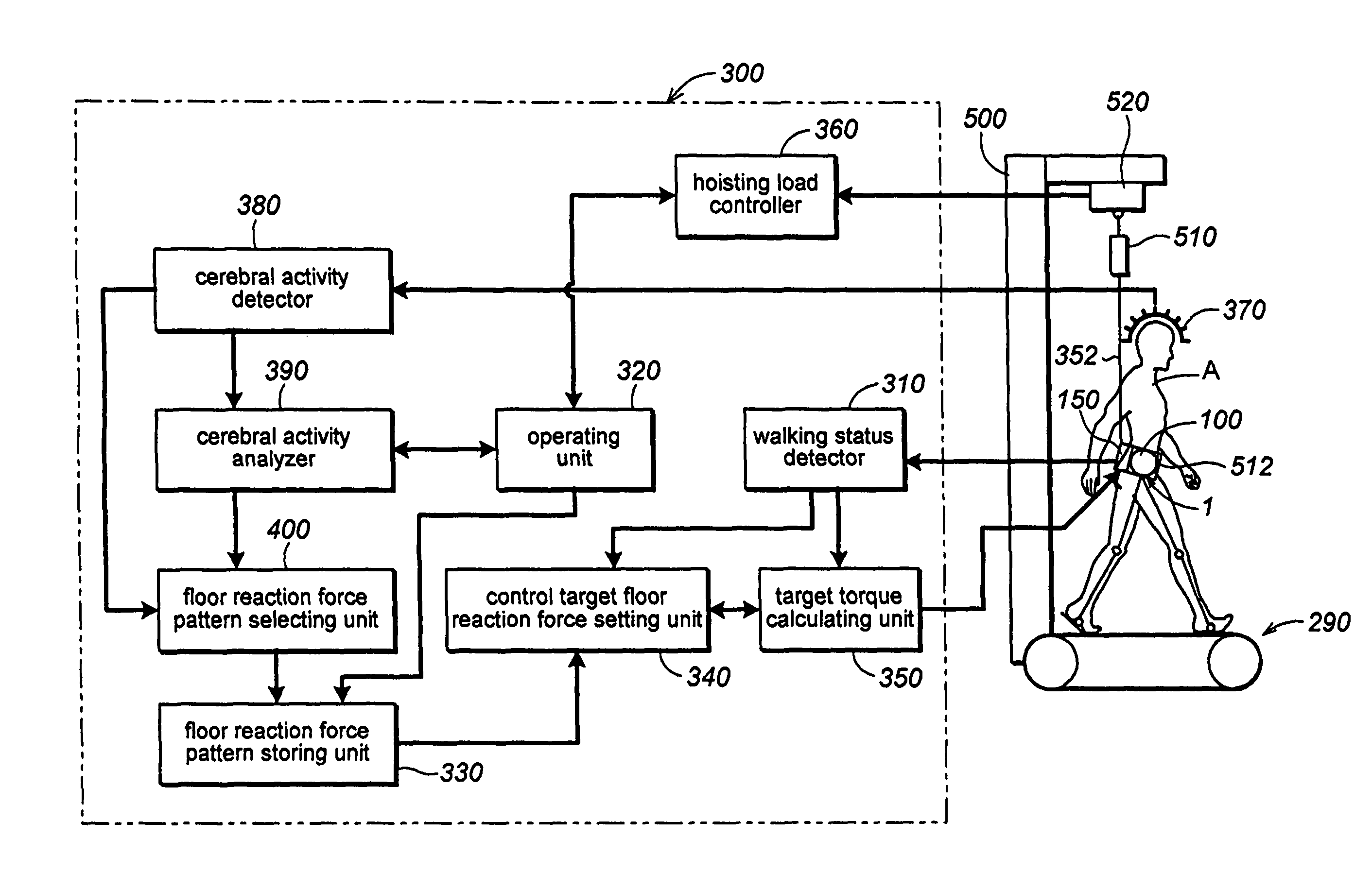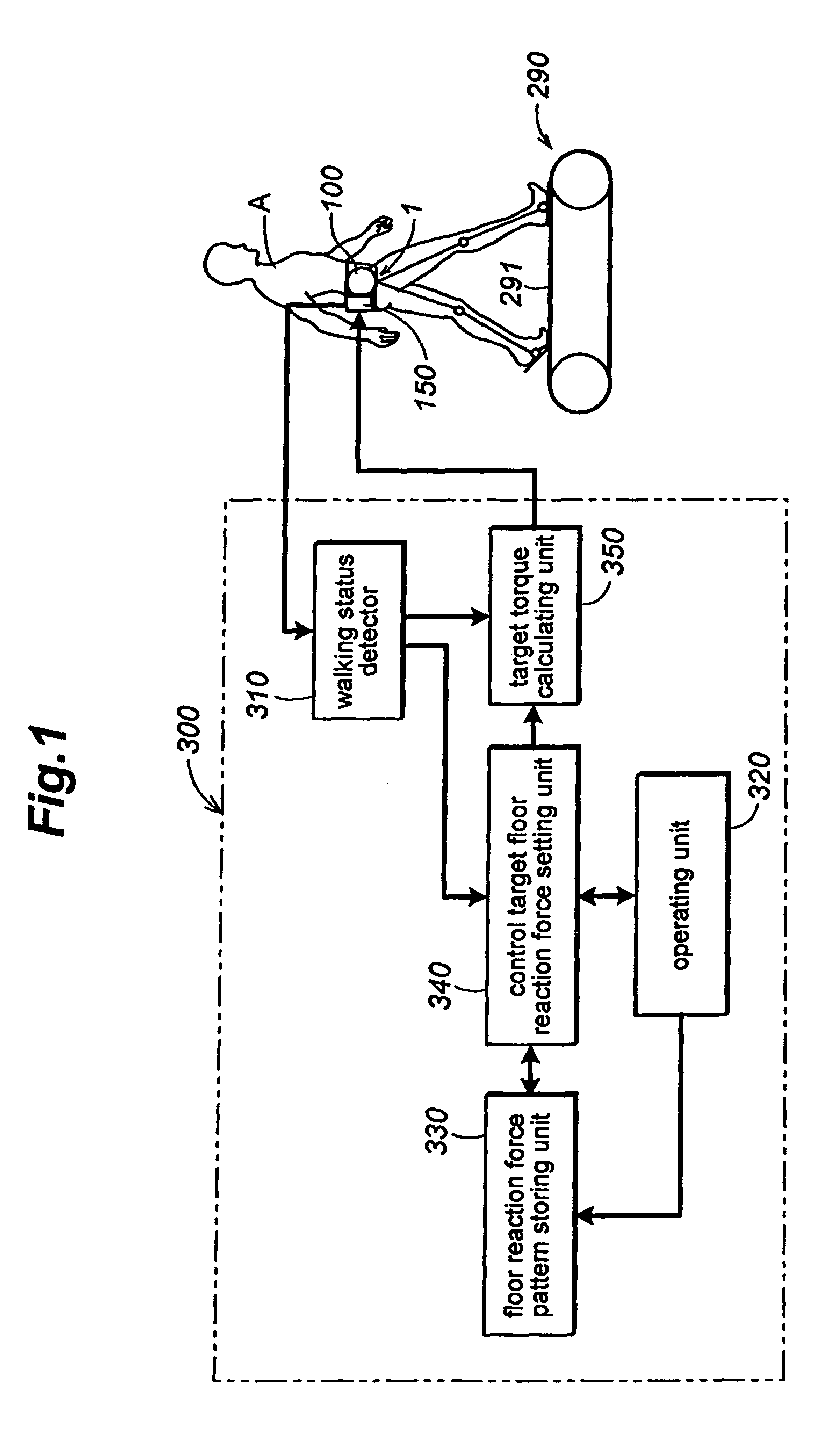Rehabilitation device and controlling method thereof
a technology which is applied in the field of rehabilitation device and controlling method thereof, can solve the problem that the type of rehabilitation is supposed to be a burden for the physical therapist, and achieve the effects of promoting the reconstruction of cerebral tissue, effective walking training, and reducing the burden on the physical therapis
- Summary
- Abstract
- Description
- Claims
- Application Information
AI Technical Summary
Benefits of technology
Problems solved by technology
Method used
Image
Examples
embodiment 2
[0121]FIG. 10 shows another embodiment (embodiment 2) of the rehabilitation device according to the present invention. In FIG. 10, the parts corresponding to those of FIG. 1 are assigned with the same numerals and thus their explanation is omitted.
[0122]In this embodiment, the rehabilitation device comprises, a stand 500, a crane 510 mounted to the stand 500, a wire 511 hanged from the crane 510, and a belt 512 connected to the wire 511 and adapted to be worn around the hip and abdomen of a patient A.
[0123]In this embodiment, the patient A is partially hoisted at the upper part of the lower limbs in order to reduce the weight load on the lower limbs during walking exercise, thereby enabling rehabilitation for patients incapable of standing and walking on their own. The hoisting load of crane 510 is controlled by a hoisting load controller 360 to increase or decrease the floor reaction force that the patient receives.
[0124]The hoisting load controller 360 may detect the hoisting load...
embodiment 3
[0133]FIG. 12 shows yet another embodiment (embodiment 3) according to the rehabilitation device of the present invention. In FIG. 12, the parts corresponding to those of FIG. 1 and FIG. 10 are assigned with the same numerals, and thus their explanation is omitted.
[0134]In this embodiment, a patient A wears on his / her head a cerebral activity measuring device 370 for measuring the brain activity over time. The cerebral activity measuring device 370 may be a head gear type and comprises, for example, electroencephalograph, magnetoencephalograph, near-infrared spectrometer to obtain electroencephalogram and values indicating brain activity such as brain magnetic field and oxygen metabolism. The signals of the values indicating brain activity obtained from cerebral activity measuring device 370 then are inputted into a cerebral activity detector 380.
[0135]The cerebral activity detector 380 quantitatively-detects the cerebral activity of the patient A during walking based on the value s...
PUM
 Login to View More
Login to View More Abstract
Description
Claims
Application Information
 Login to View More
Login to View More - R&D
- Intellectual Property
- Life Sciences
- Materials
- Tech Scout
- Unparalleled Data Quality
- Higher Quality Content
- 60% Fewer Hallucinations
Browse by: Latest US Patents, China's latest patents, Technical Efficacy Thesaurus, Application Domain, Technology Topic, Popular Technical Reports.
© 2025 PatSnap. All rights reserved.Legal|Privacy policy|Modern Slavery Act Transparency Statement|Sitemap|About US| Contact US: help@patsnap.com



